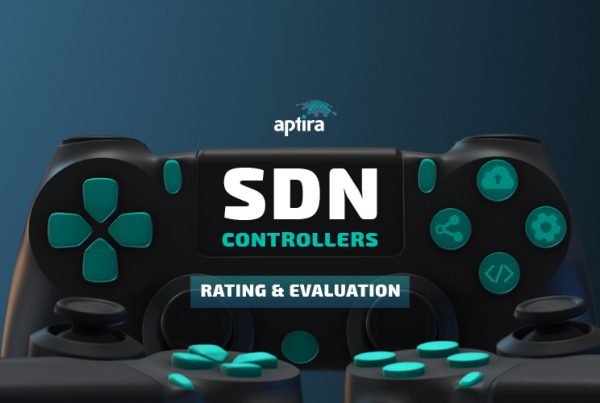Container Orchestration for Modern Applications
Platforms such as Docker have provided users with greater flexibility when running applications on both virtual infrastructure and physical hardware. They are extremely lightweight and efficient, meaning your services can easily be packed up, moved between environments and switched between testing and production. However, once your environment starts to grow and involves multiple containers on multiple hosts, things can start to get a little tricky.
This is where Kubernetes comes in. Kubernetes is specifically designed for deploying and managing containerised applications at scale across all major public clouds and private infrastructure. This enables users to operate their own Kubernetes clusters on demand, or easily outsource their Kubernetes operations to orchestration experts – such as SUSE & Aptira.
Teaming up with our good friends at SUSE, we’re offering a free, comprehensive guide for Kubernetes Management.
Extensive, Efficient and Open Orchestration
Kubernetes is an open-source system. This means that vendor lock-in has been eliminated by providing core capabilities without the typical vendor restrictions which are often imposed on other systems.
Kubernetes takes a modular approach to architecture design, allowing for applications to be broken down into many smaller, specialized parts. This approach enables faster development, facilitates the isolation of dependencies and provides greater elasticity for scaling. Aptira designs these smaller, modularized containers to create a well-tuned containerized environment which is tailor made to suit specific requirements. The Kubernetes controllers make this infrastructure easy to manage throughout the full life cycle of your application.
The Aptira team are Certified Kubernetes Administrators (CKA), boasting real-world experience creating, configuring and managing several Kubernetes clusters in production environments. We perfect orchestration, taking developer outputs and putting them into production in a maintainable way.
Scale your applications
With container orchestration, it’s easy to ramp your application up or down to meet the fluctuations in demand. Software can be deployed in a scale-out manner across multiple pods, and deployments can be scaled in or out at any time. Kubernetes facilitates horizontal autoscaling, automatically scaling up/down the number of pods based on the usage of resources. Users can also pause/resume deployments to save time and resources.
Kubernetes can also automatically orchestrate your storage platform of choice – local or network storage – and provide the provisioned persistent storage to your applications running inside containers.
Fixing and Updating Software
In the case of an application failure, applications can be fixed automatically using Kubernetes’ auto-healing feature to re-create the pod. When a node or server fails, they will simply be re-deployed on another available node/server.
When deploying a new software version, multiple versions can run in parallel. The new version can be used to test the new deployment in production, then the previous version can be scaled down simultaneously.
This allows rolling updates to take place with zero downtime, incrementally updating pods and automatically reverting to a previous version when needed.
Simple Cluster Management
Kubernetes can be run anywhere, giving users the freedom to take advantage of on-premises, hybrid or public for running your applications. Not only this, containers are more transparent than virtual machines, making monitoring and management of your application even easier. It also simplifies many complex management tasks, including:
- Scheduling
- Load Balancing & Distribution
- Version Control
Kubernetes also facilitates simpler server maintenance. It provides the application design primitives necessary for end-users (your developers) to define the configuration of their workloads without operator support. Infrastructure operators can focus on deploying mostly homogeneous Kubernetes clusters without needing specialized knowledge of application workloads, saving you time and money.
Non-Restricted Frameworks and Languages
Unlike many traditional platform-as-a-service offerings, Kubernetes provides much greater flexibility for the types of applications supported. Kubernetes does not restrict application frameworks, supported languages or distinguish services from applications. If an application can run in a container, it should run on Kubernetes, making Kubernetes the container orchestration platform of choice for modern applications.
We also support other Container Orchestration platforms in addition to Kubernetes – including Docker, Cloudify, Kolla-Ansible, Murano and more. Check out our supported technologies or chat with our Solutionauts to find out the best orchestration platform for your requirements.
Kubernetes for Dummies
A Valuable Resource
Enterprise applications are becoming more complex, and dev and ops teams need a tool to manage that complexity. Kubernetes is that tool – enabling enterprises to deploy, scale and manage containerized applications everywhere.
This handy guide walks you through that process, from evaluating where your company stands now, to what to look for when selecting a Kubernetes management platform, to real work examples of how Kubernetes can drive innovation from core to cloud to edge.
Kubernetes Management for Dummies will get you well on your way to building a successful enterprise-grade Kubernetes environment. After reading this you will be able to:
- Define your strategy
- Learn from industry leaders
- Select the right management platform








As developer I found these tools wonderful